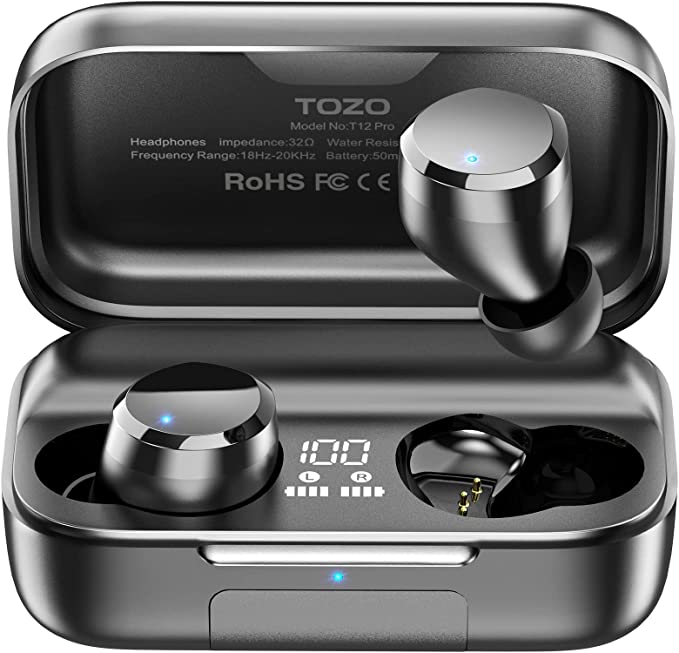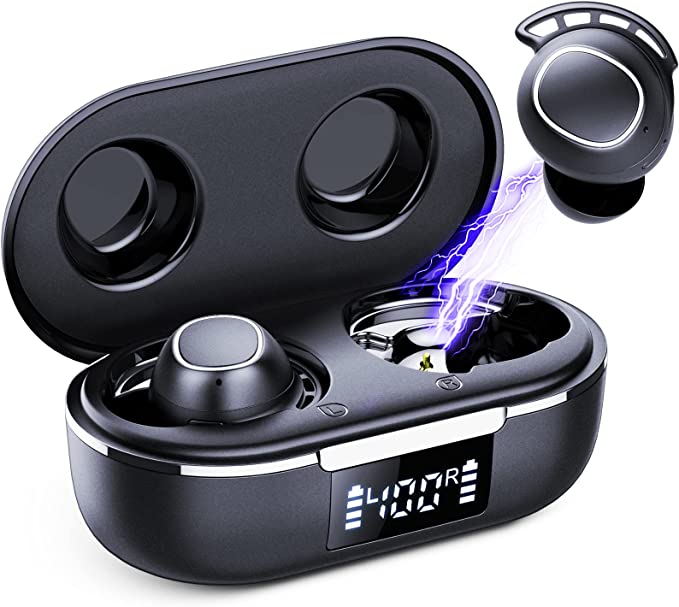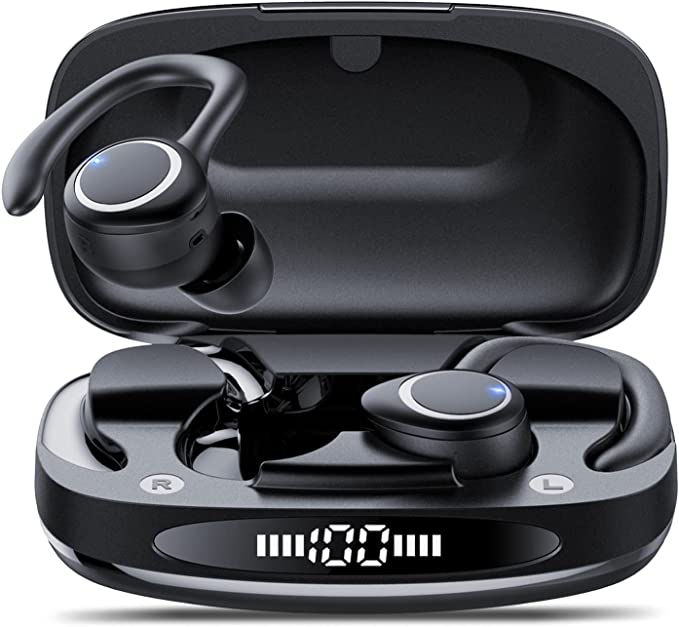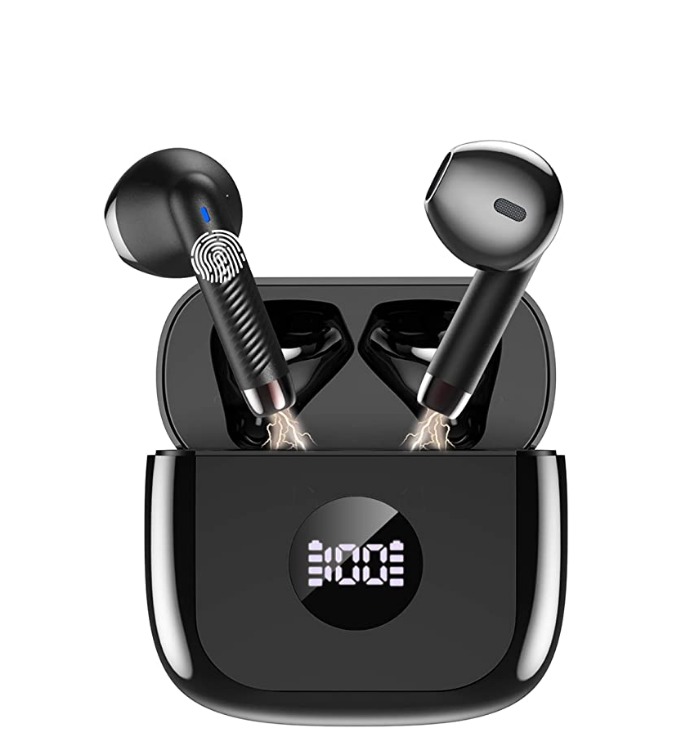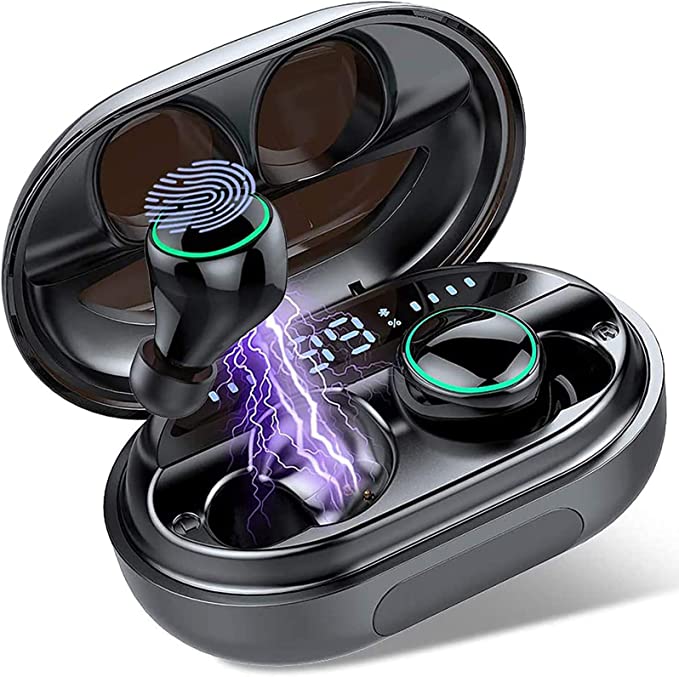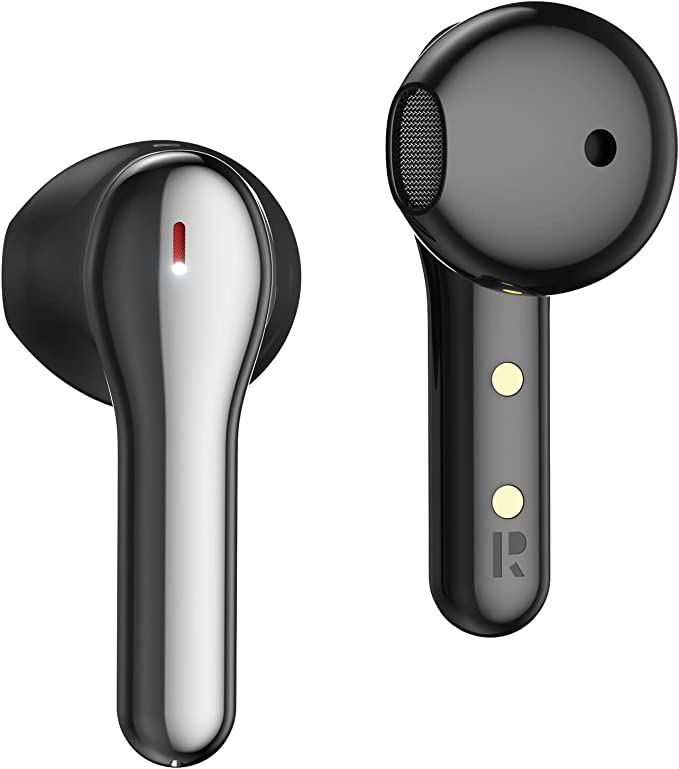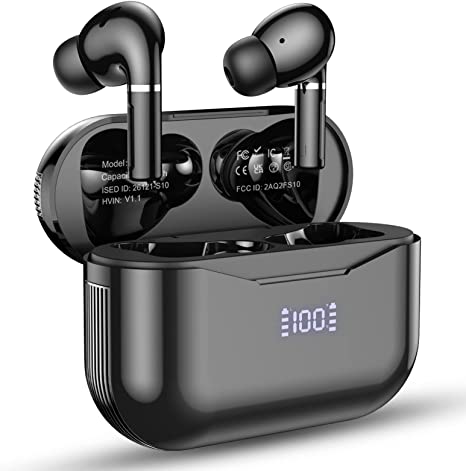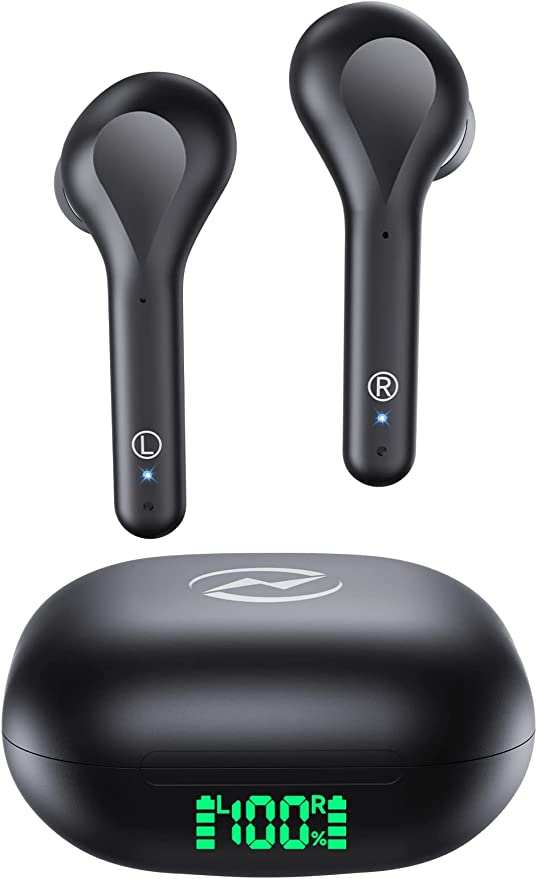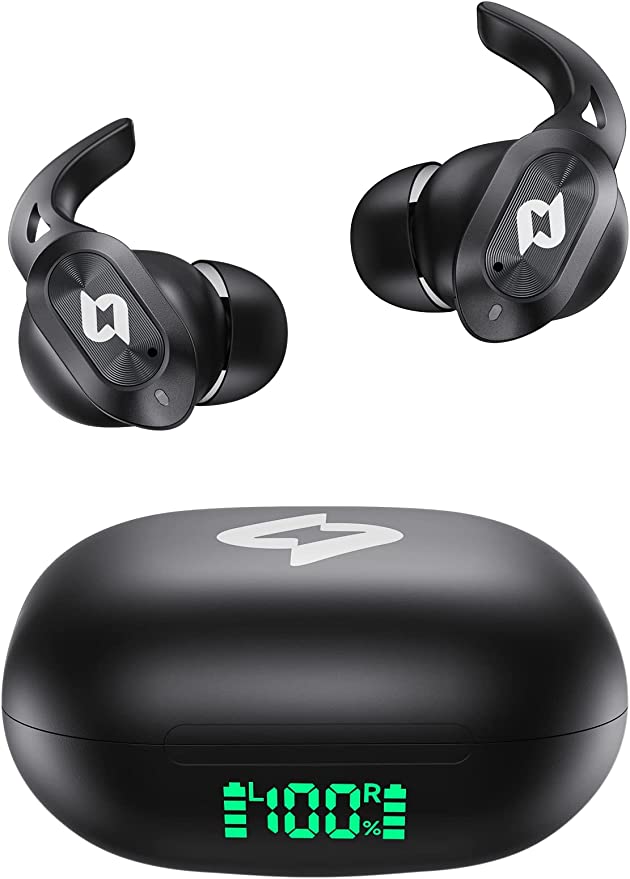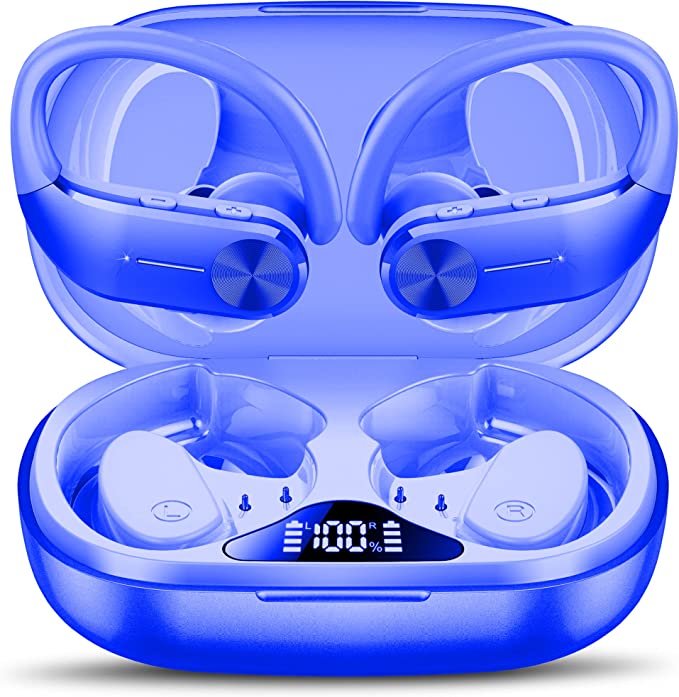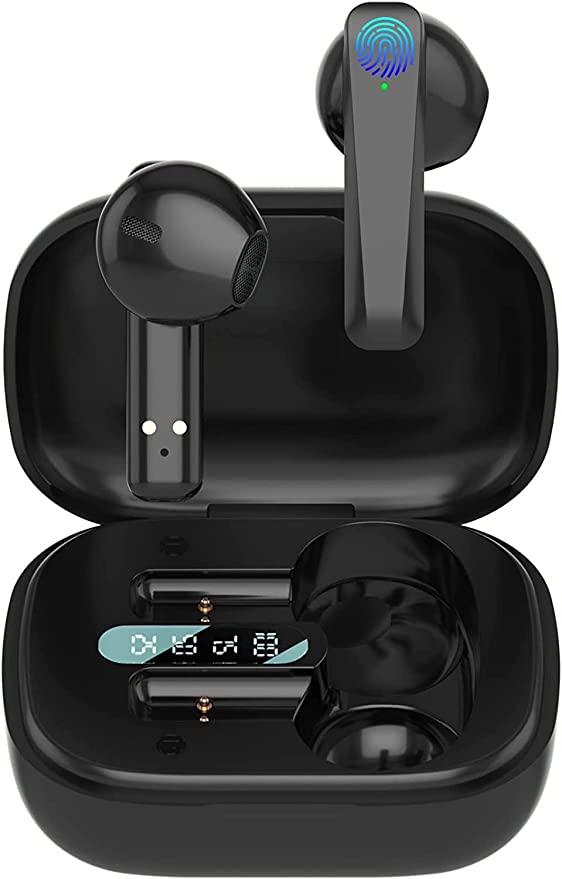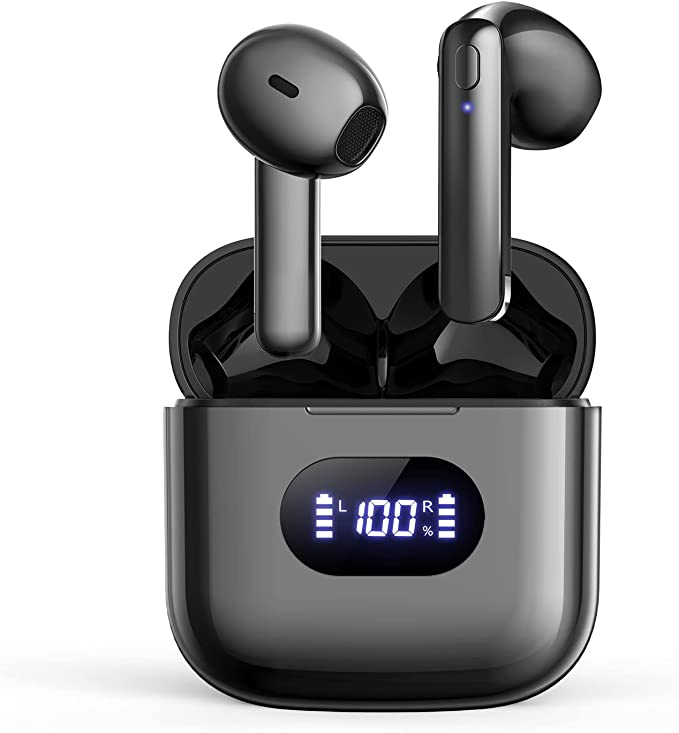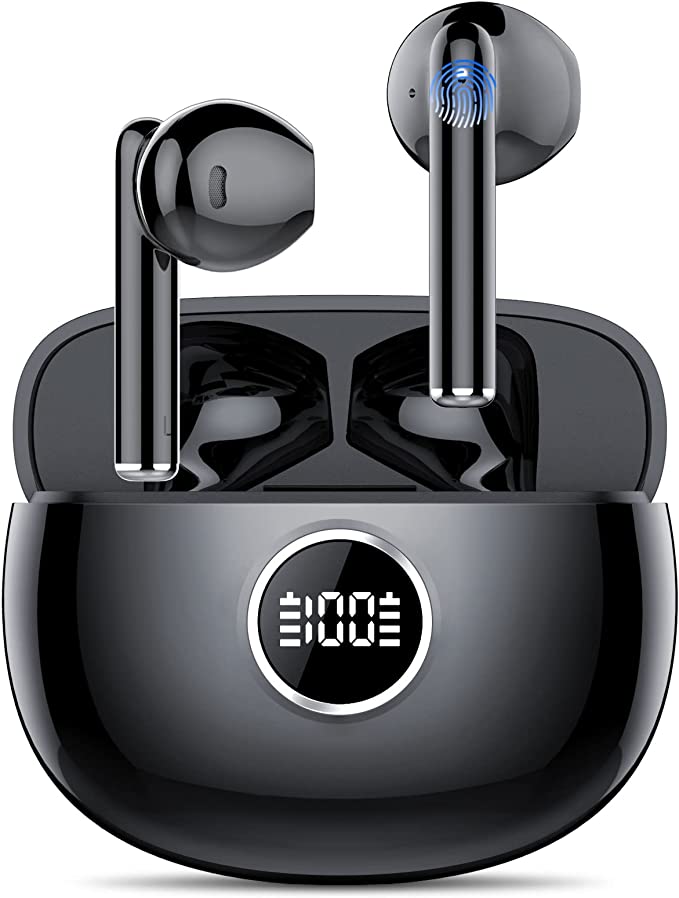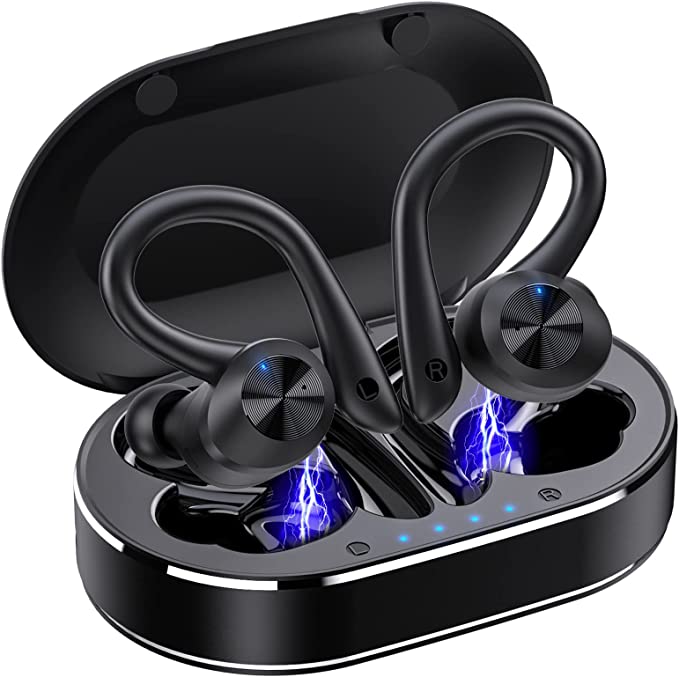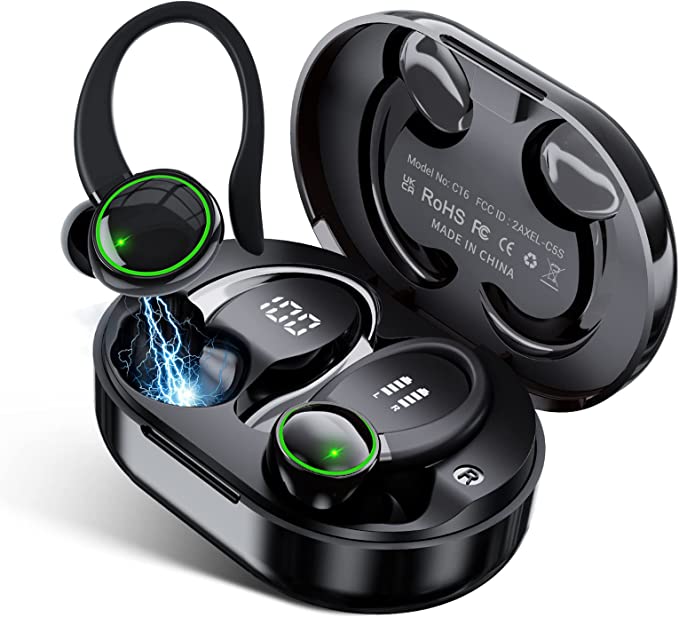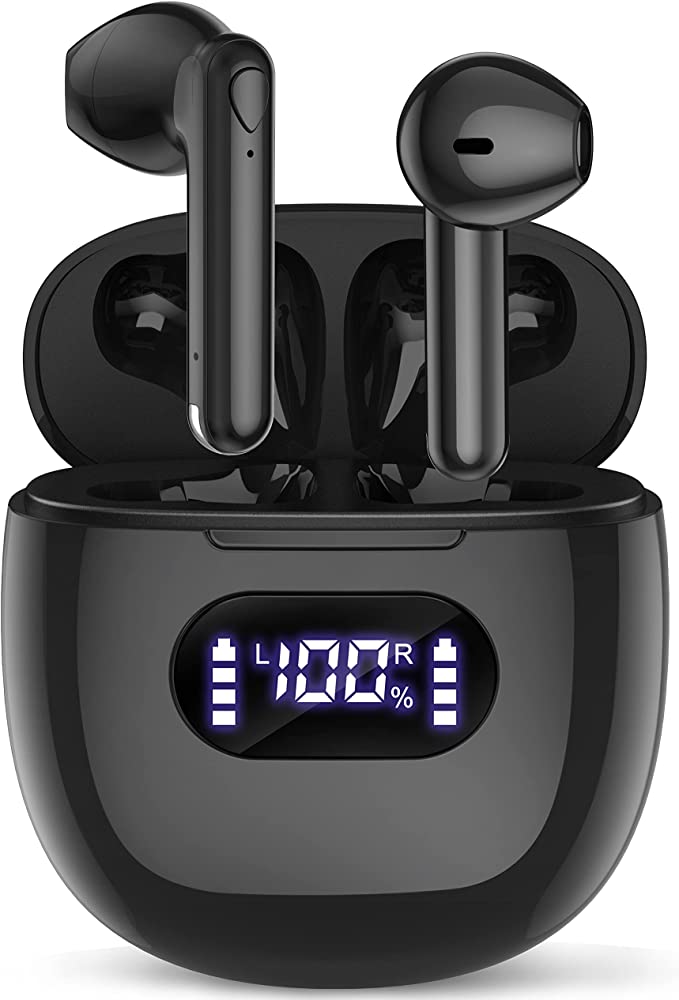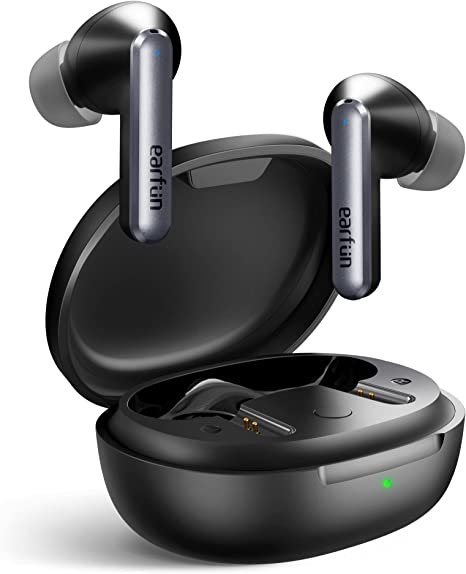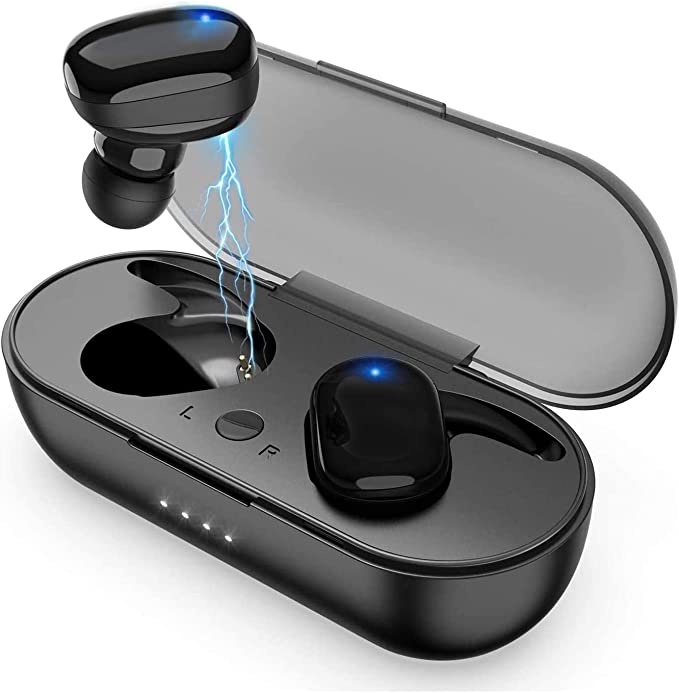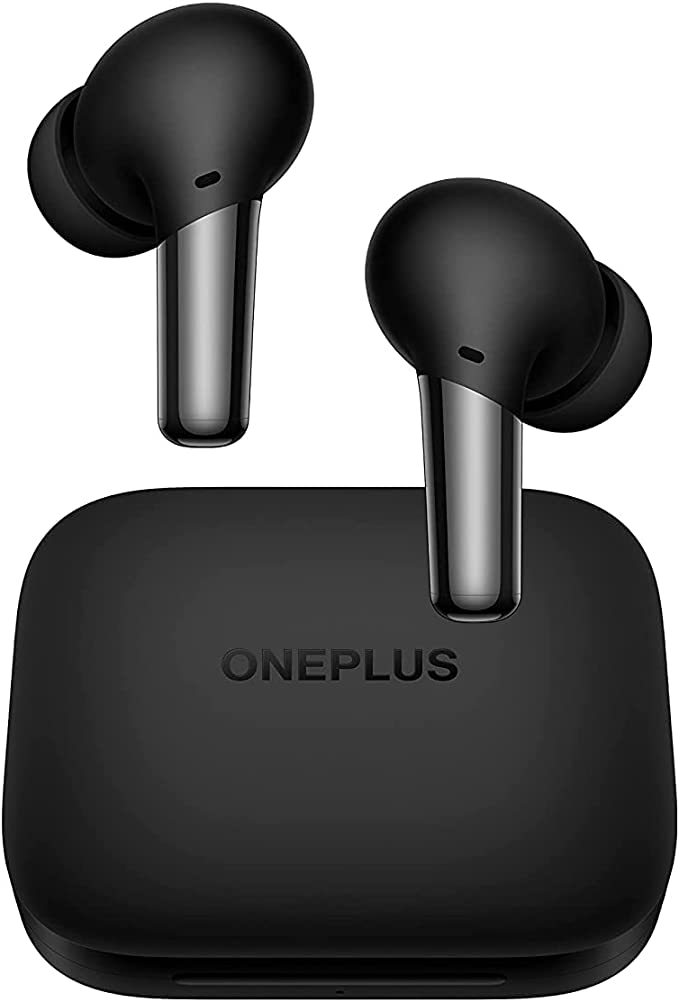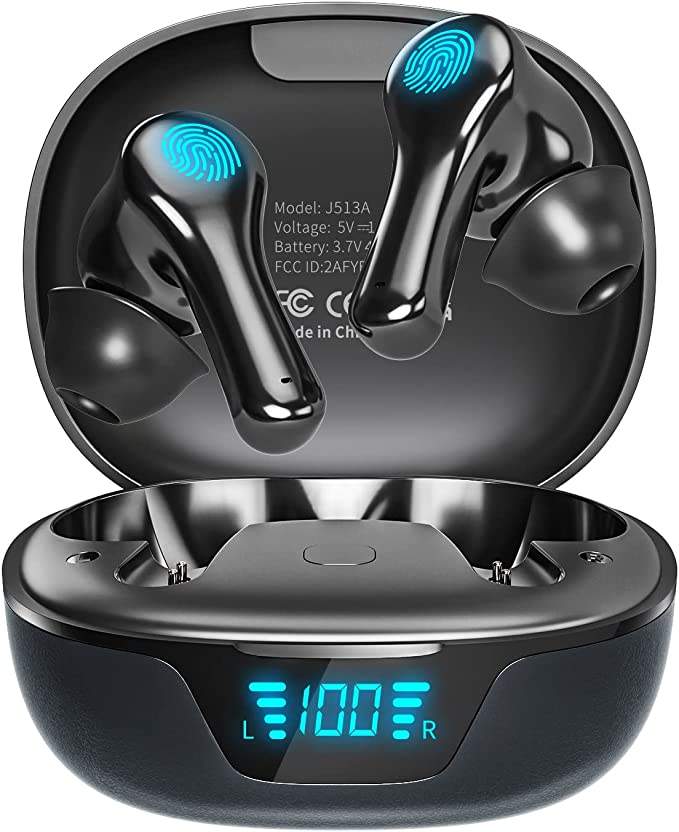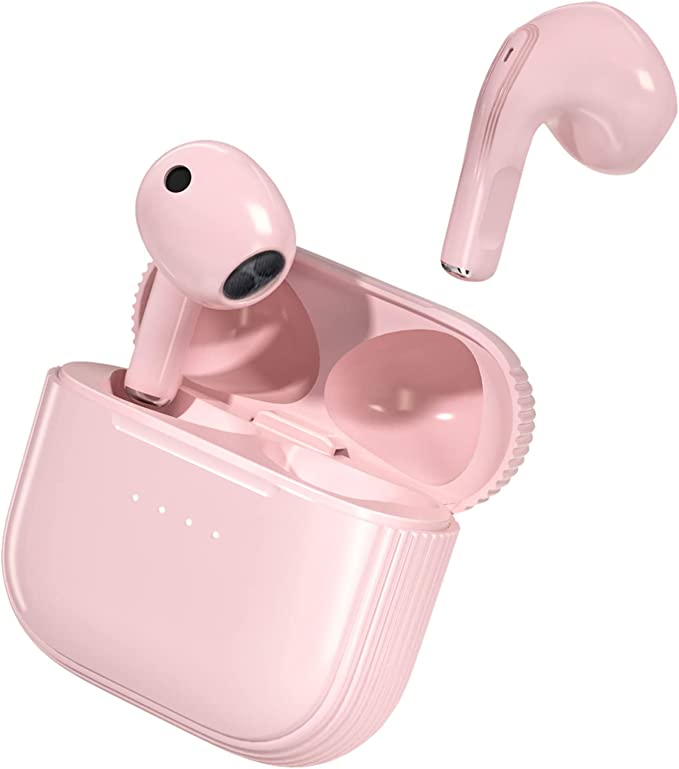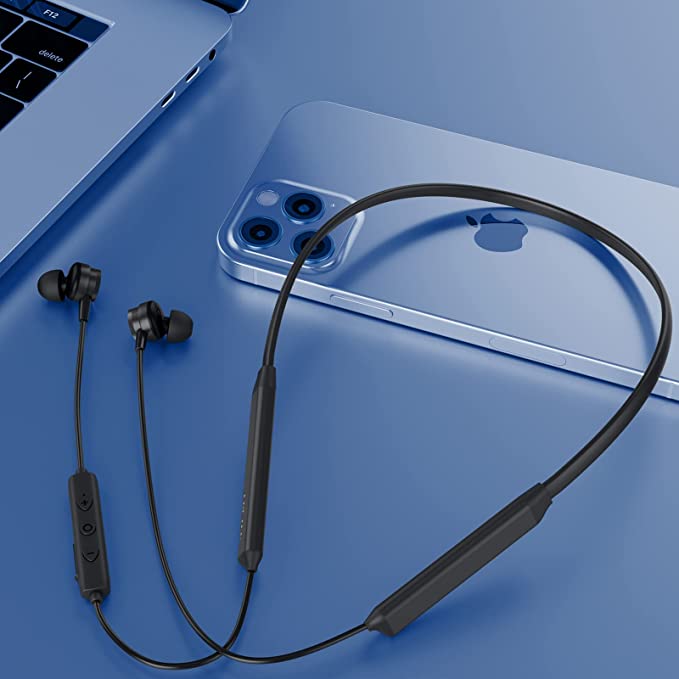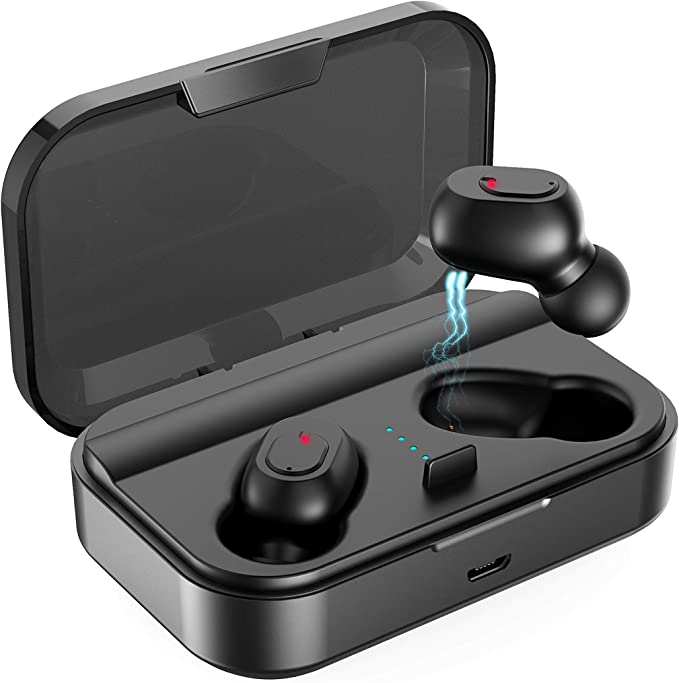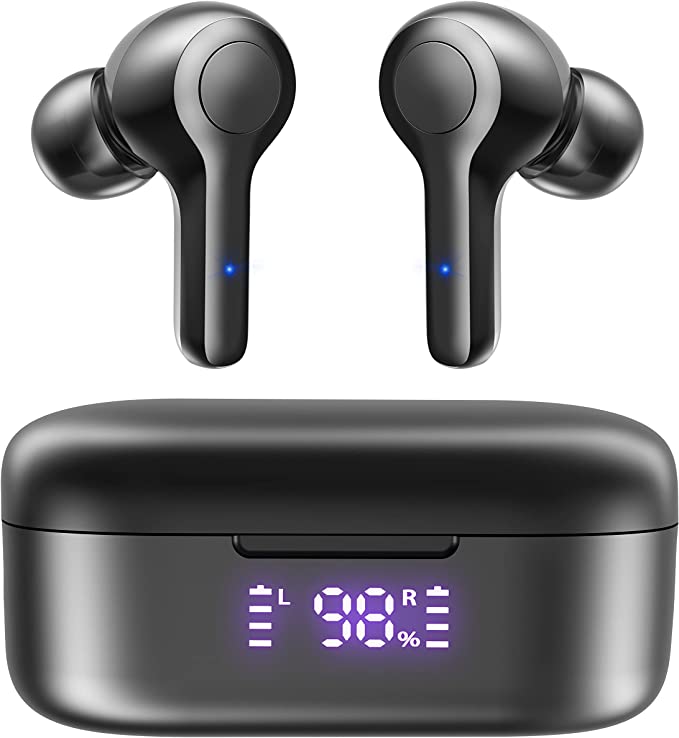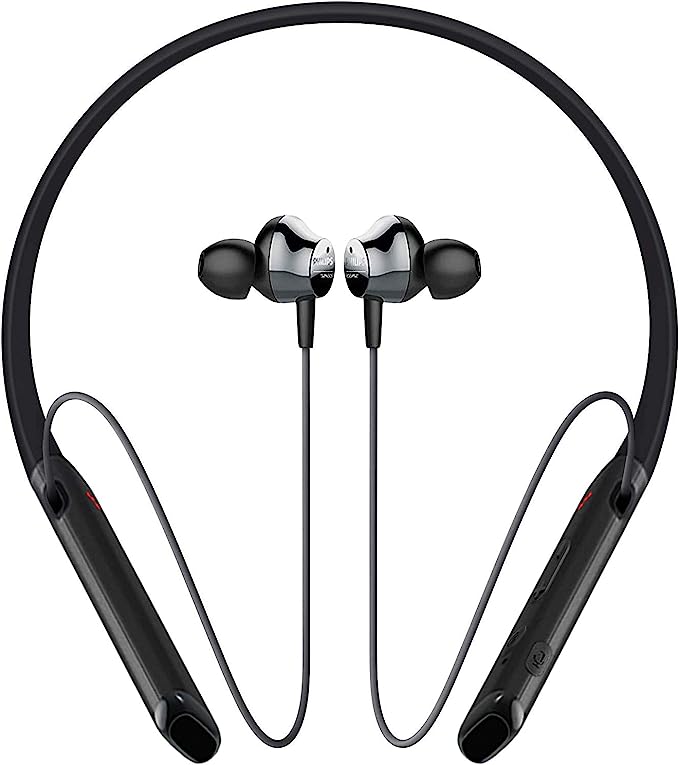Litwlds M35 Wireless Earbuds: A Top-Notch Bluetooth Earbud for Supreme Sound and Endurance
Update on June 21, 2025, 9:55 a.m.
We live in an era of delightful miniaturization, where complex technology shrinks to fit comfortably in our pockets, or even our ears. Wireless earbuds, once a novelty, are now ubiquitous, silent workhorses piping podcasts into our commutes, soundtracks to our workouts, and crucial conversations into our busy days. But beneath their often sleek and unassuming exteriors, like the litwlds M35 perhaps in its rather fetching “Pink-Off” hue, lies a fascinating symphony of scientific principles and engineering prowess. Let’s peel back the layers and explore the invisible engineering that brings these tiny audio companions to life.

The Architecture of Audio: Crafting Deep Bass and Clear Conversations
At the very heart of any sound experience is the ability to move air, and to do so with precision. The litwlds M35 earbuds boast 13mm dynamic drivers, a specification that hints at their acoustic ambitions. Think of a dynamic driver as a miniature, traditional loudspeaker. It contains a diaphragm (a thin, flexible membrane), a voice coil attached to it, and a magnet. When an electrical audio signal flows through the voice coil, it creates a fluctuating magnetic field that interacts with the permanent magnet, causing the coil and the attached diaphragm to vibrate rapidly. These vibrations push and pull the air, creating the sound waves that our ears interpret.
Now, why does that “13mm” matter, particularly for the promised “deep bass”? Imagine trying to create a deep, resonant boom with a tiny cocktail drum versus a large bass drum. The larger drum skin can move a significantly greater volume of air with each strike, generating those powerful, low-frequency waves we perceive as bass. Similarly, a larger driver diaphragm, like the 13mm one in the M35, has more surface area to displace air. This physical advantage allows it to more effectively reproduce those lower octaves, leading to what the product describes as “impressive sound with deep bass” and “richer sound components.” It’s fundamental physics at play, ensuring your music has a satisfying foundation.
But what about when you need to be heard? In our often-cacophonous world, clear communication is paramount. This is where Environmental Noise Cancellation (ENC), specifically employing CVC8.0 (Clear Voice Capture) technology and dual microphones, steps in. It’s crucial to distinguish this from Active Noise Cancellation (ANC) that many associate with high-end headphones for immersive music listening. While ANC aims to create a bubble of silence for your ears, ENC in this context is primarily focused on cleaning up the audio you send out during phone calls. The M35’s dual-microphone system is key: typically, one microphone is positioned to best capture your voice, while the other samples the ambient noise around you – the street traffic, the office chatter, the café buzz. The CVC8.0 algorithm then intelligently processes these two streams, identifying and suppressing the unwanted background noise while isolating and enhancing your voice. The result? The person on the other end experiences “crystal-clear phone calls,” as if you’re speaking from a much quieter environment. It’s like having a very discerning audio engineer selectively filtering your outgoing sound.

The Wireless Weave: Bluetooth 5.3 and the Freedom of Unbroken Sound
The magic of wireless earbuds, of course, lies in their untethered nature, a feat made possible by Bluetooth technology. The litwlds M35 incorporates Bluetooth 5.3, reportedly from Qualcomm. Bluetooth has come a long way since its early days, with each iteration bringing improvements in speed, stability, and efficiency. The M35’s product page highlights that Bluetooth 5.3 offers a “2X faster transmission rate, lower latency, and lower power consumption.” Let’s break down what this means for your everyday experience.
A faster transmission rate doesn’t just mean files transfer quicker (though that’s part of the broader Bluetooth spec); for audio, it can mean the potential to handle higher-quality audio streams with less compression, provided your device and audio codecs support it. Lower latency is perhaps the most immediately noticeable benefit for many. Latency is the delay between when an audio signal is sent from your phone and when you actually hear it in your earbuds. High latency is what causes that annoying lag where an actor’s lips move out of sync with their voice in a video, or the sound of an explosion in a game arrives a split-second too late. Bluetooth 5.3 aims to significantly reduce this delay, making for a much more synchronized and immersive experience, whether you’re binge-watching a series or aiming for a high score. Think of it as upgrading from a winding, single-lane country road for your audio data to a smooth, multi-lane expressway.
Finally, lower power consumption is a critical, albeit less glamorous, advantage. Bluetooth 5.3 is designed to be more energy-efficient, meaning the tiny radios in your earbuds sip power more delicately. This directly contributes to longer playback times on a single charge, letting you enjoy your audio for longer stretches without reaching for the charging case. It’s a win for convenience and, in a small way, for energy conservation. Litwlds also commendably notes potential packaging discrepancies: “Due to the replacement of old and new packaging, you may receive the package of Bluetooth 5.1, but the product is the latest version of Bluetooth 5.3.” This kind of transparency is always welcome.

Built for the Real World: Resilience, Endurance, and Ergonomic Grace
Our gadgets need to keep up with our lives, and that means being able to withstand a bit of rough and tumble, and certainly the occasional drenching. The litwlds M35 earbuds come with an IPX6 waterproof rating. “IP” stands for Ingress Protection, a standard (IEC 60529) that classifies the degree of protection provided by enclosures of electrical equipment. The “X” in IPX6 means the earbuds haven’t been specifically rated for dust ingress (or the manufacturer chose not to test for it). The “6” is the crucial part for water: it signifies that the enclosure can protect against powerful water jets from any direction.
What does this mean practically? It means your M35s should be perfectly fine handling sweat during an intense workout session, getting caught in a sudden rain shower while you’re out for a run, or even an accidental splash from a spilled drink. The product description mentions a “sealed case and waterproof polymer nano-coating” as the technologies providing this protection. Nano-coatings are incredibly thin, often hydrophobic (water-repelling) layers applied to surfaces to protect them. However, IPX6 does not mean the earbuds are fully waterproof for submersion – so no swimming with them. It’s about resilience against the common encounters with moisture in an active life.
Powering these daily audio experiences requires robust battery life and convenient charging. The M35 earbuds utilize a USB-C charging port for their case, a welcome move towards the increasingly universal standard. This means you might already have a drawer full of compatible cables for your phone, laptop, or tablet, simplifying your charging setup. The earbuds themselves are rated for about 4 hours of playtime on a single full charge, with the charging case extending this to a substantial total of up to 30 hours of listening. For many users, this could mean several days of typical use before needing to plug in the case. And for those moments when you realize your earbuds are dead just as you’re heading out, the “Fast Type-C charging” offers a lifeline: the source states that a brief charge “when bathing or eating is enough to listen to music for 2 hours.”
Beyond resilience and power, comfort is king, especially for something you wear in your ears for extended periods. The M35s are described with an “ergonomic craft,” emphasizing “small size and lightweight” to make them “burden-free on your ears.” A good ergonomic design for in-ear headphones does more than just prevent discomfort. A snug, secure fit ensures the earbuds stay put during activity, and it also creates an effective seal in the ear canal. This seal is vital for two reasons: it enhances the perception of bass frequencies by preventing sound leakage, and it provides a degree of passive noise isolation, helping to muffle some of the outside world even without active noise cancellation. While not explicitly detailed for this model, achieving such a fit typically relies on offering various sizes of silicone ear tips, allowing users to find their perfect match.

Seamless Simplicity: The Ease of Pairing and Touch
The most advanced technology can fall flat if it’s a pain to use. The litwlds M35 aims for effortless interaction, starting with “One-Step Pairing.” The idea is simple but powerful: open the lid of the charging case, and the wireless headphones will automatically attempt to connect to the last paired device. This removes much of the fiddly Bluetooth menu navigation that plagued earlier wireless devices.
Once connected, touch controls on both earbuds offer convenient management of your audio world. The ability to control tracks (play, pause, skip), answer or reject calls, or even summon your phone’s voice assistant (like Siri or Google Assistant) with a simple tap or series of taps means your phone can stay safely tucked away. This is particularly handy when you’re exercising, commuting, or simply have your hands full. The system also supports using a single earbud independently, offering flexibility for those times you want to keep one ear open to your surroundings.
Conclusion: The Everyday Marvel in Your Ears
The litwlds M35 wireless earbuds, like many of their contemporaries, are a testament to how far consumer electronics have progressed. Packed into their diminutive shells is a carefully orchestrated blend of audio physics enabling deep bass from 13mm drivers, sophisticated signal processing for clearer calls via ENC CVC8.0, advanced radio frequency engineering in the form of Bluetooth 5.3 for stable and efficient connections, material science providing IPX6 water resistance, and thoughtful ergonomic design for comfort and usability.
These are not just simple accessories; they are complex pieces of technology, refined to integrate almost invisibly into the fabric of our daily lives, enhancing our connection to music, information, and each other. So, the next time you pop in your wireless earbuds, whether they’re the litwlds M35 or another pair, take a moment. Listen a little closer. There’s a remarkable amount of science, invisible yet ever-present, making that seamless audio experience possible.

